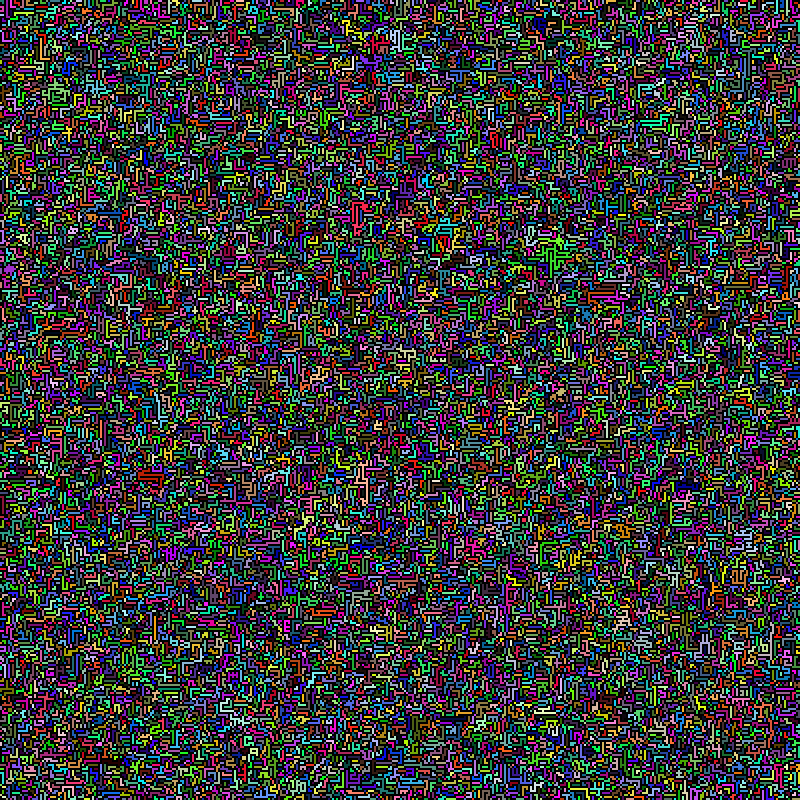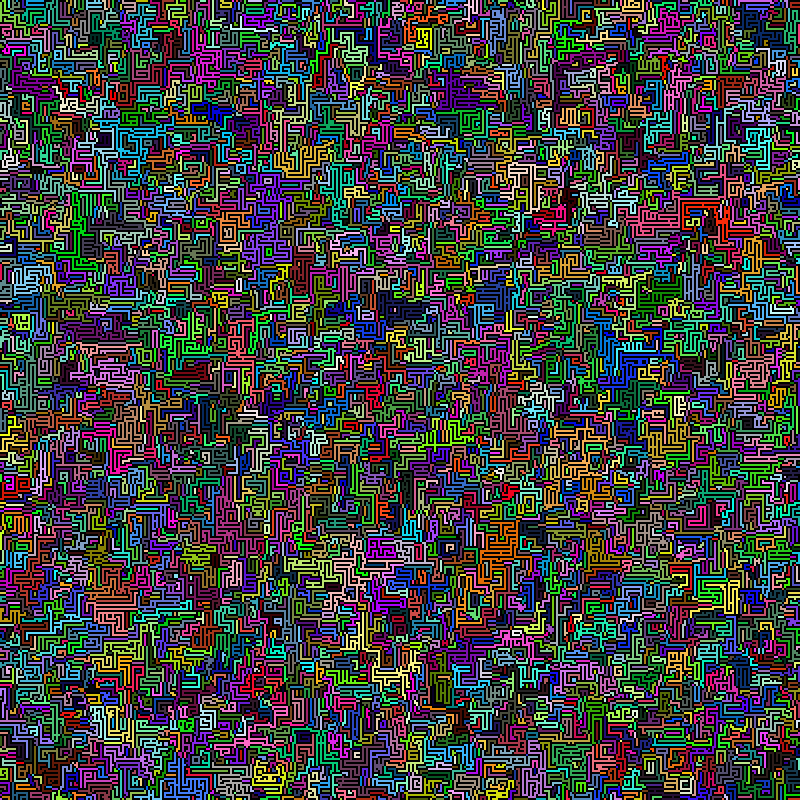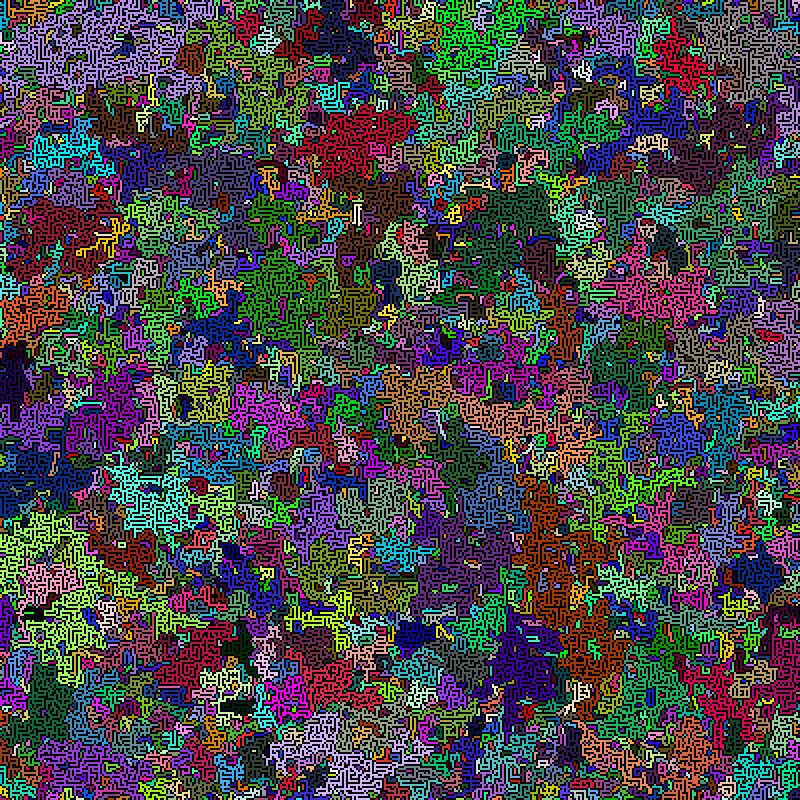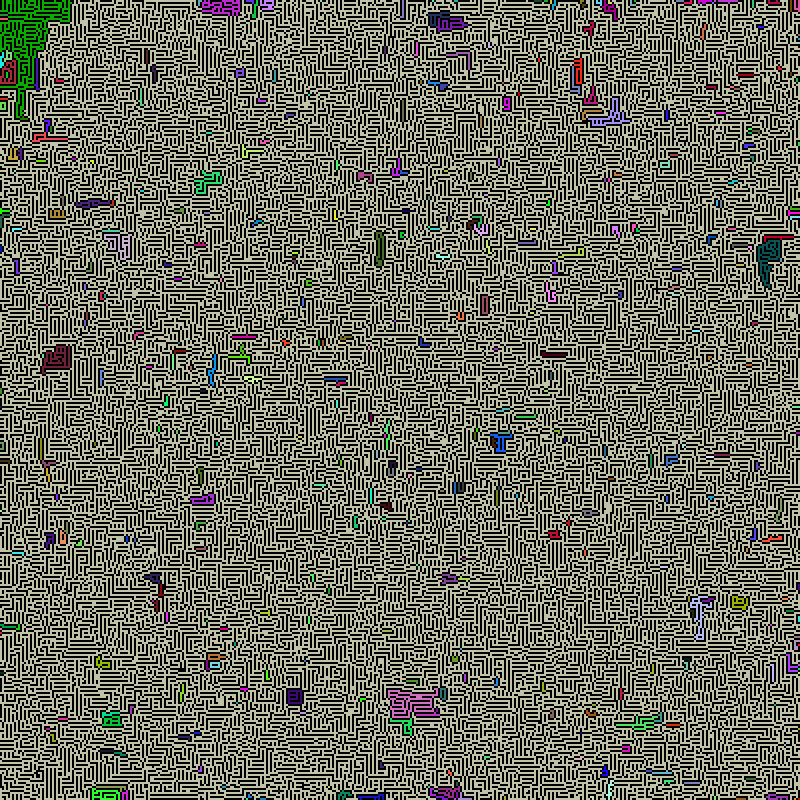Cellular automaton maze generation, part 2
Let us continue yesterday’s discussion on maze-generating rules by considering some larger examples. By giving each connected component of “Maze” (B3/S12345) a unique colour, it is easy to see just how disconnected the maze is:

Applying the same processing to “Mazectric” (B3/S1234) we see that this maze is marginally better, but it is still highly disconnected:

As noted yesterday, we get a significant improvement by considering the inverse colouring of “Maze” (that is, by interpreting the white cells as walls and the black cells as corridors):

This makes the connected components a lot larger, but there is still quite a few of them. My proposed B2/S123, however, consists of one huge connected component and a fairly small number of very small or tiny components:

That’s what I call a maze!
